Green building
BUILDING GREEN BUILDINGS
Green building به ساختمانهایی گفته میشود که با رعایت اصول پایداری، مصرف بهینه انرژی، کاهش تولید زباله و افزایش کیفیت هوا، ساخته میشوند. این ساختمانها از مواد بازیافتی استفاده میکنند، در طراحی و ساخت به اصول حفظ محیط زیست و بهداشتی توجه میشود و معمولاً با گواهینامههای مانند LEED (Leadership in Energy and Environmental Design)، BREEAM (Building Research Establishment Environmental Assessment Method) و WELL (Building Standard for Enhancing Health and Well-being) ارزیابی و تأیید میشوند. هدف از ساختن چنین ساختمانهایی، افزایش بهرهوری انرژی، کاهش گازهای گلخانهای و بهبود سلامت و رفاه ساکنین است.
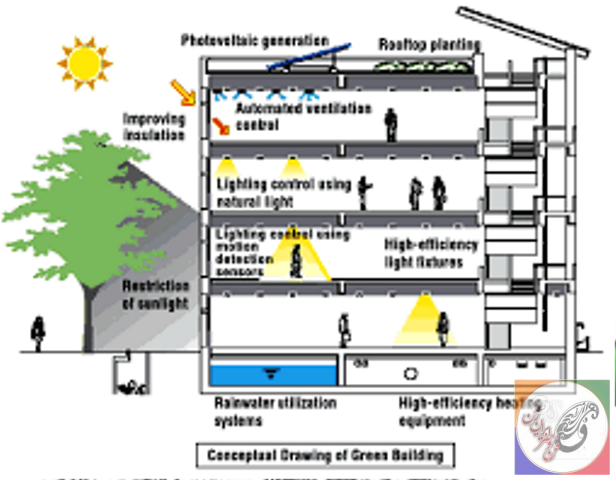
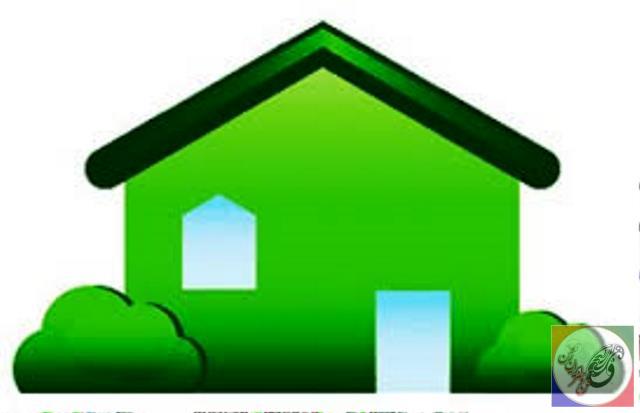
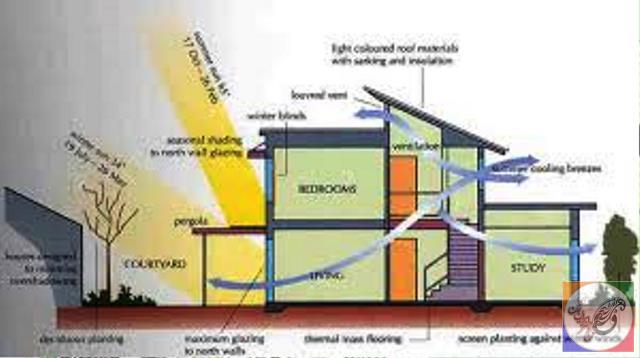

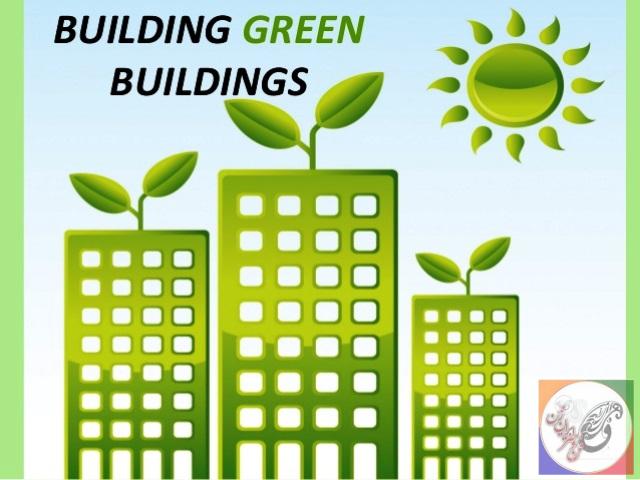
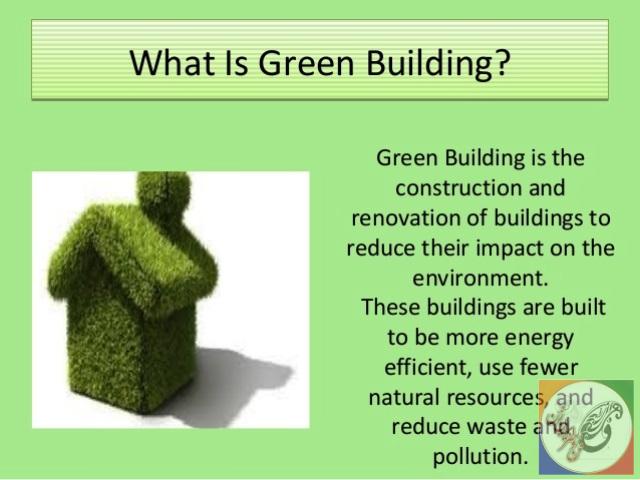

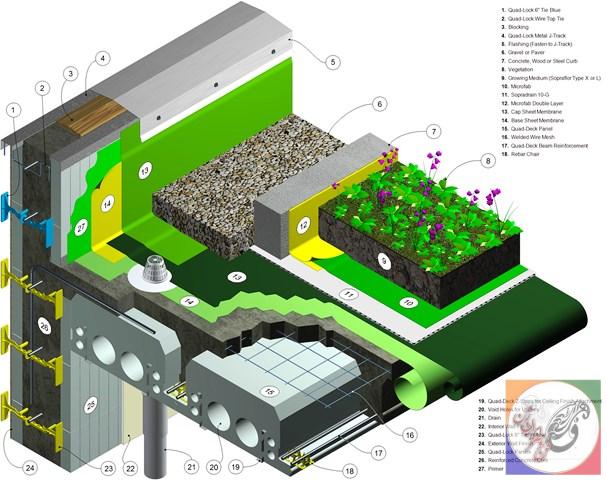

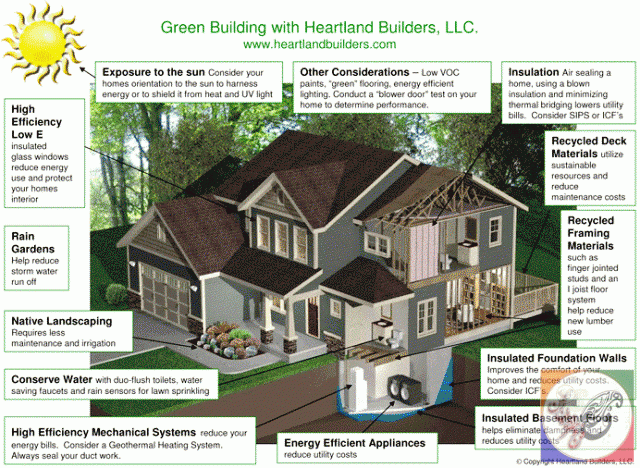
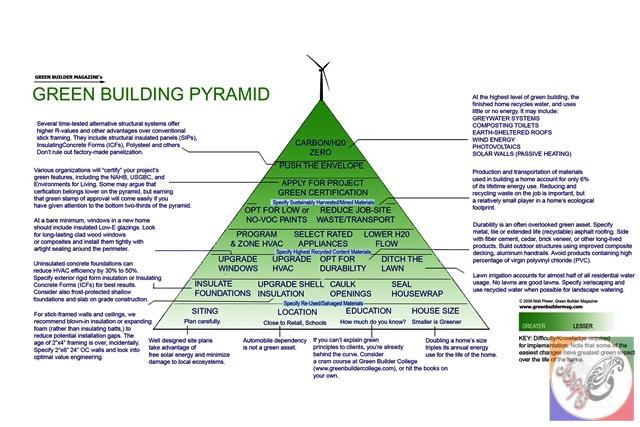
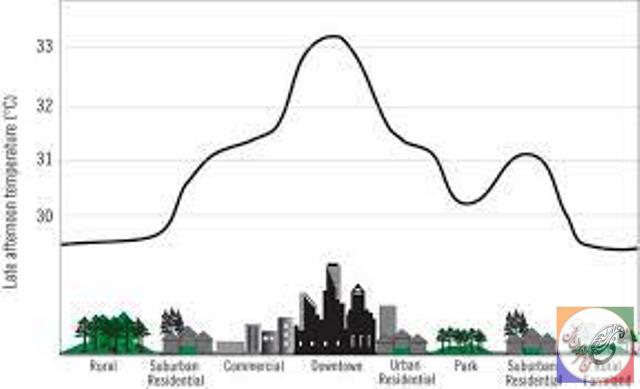
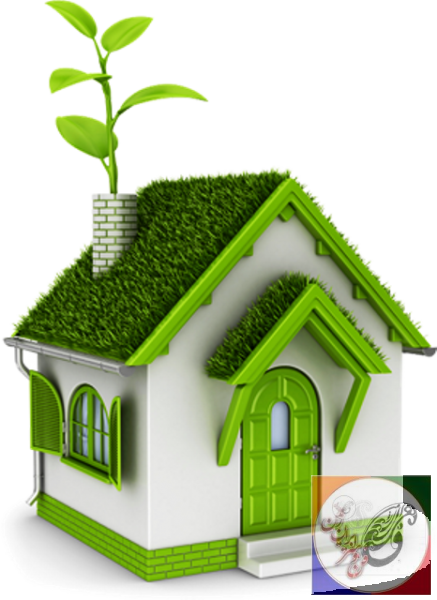
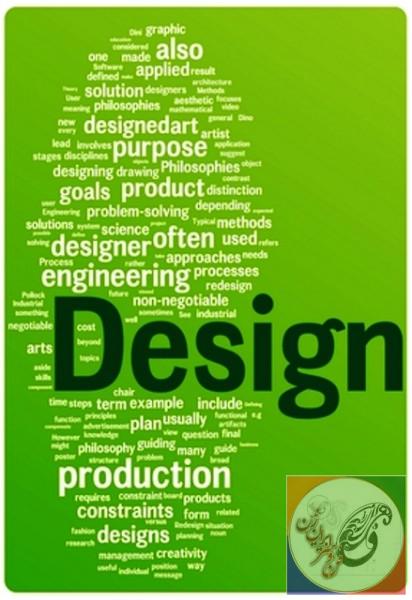
Green building
This article is about sustainable construction principles. For the building on the MIT campus, see Green Building (MIT). For the building in Louisville, see The Green Building (Louisville, Kentucky).
US EPA Kansas City Science & Technology Center This facility features the following green attributes:
LEED 2.0 Gold certified
Green Power
Native Landscaping
Sustainable energy
Wind turbines near Vendsyssel, Denmark (2004)
Energy conservation
Cogeneration Energy efficiency Heat pump Green building Microgeneration Passive solar
Renewable energy
Anaerobic digestion Geothermal Hydroelectricity Solar Tidal Wind
Sustainable transport
Carbon-neutral fuel Electric vehicle Green vehicle Plug-in hybrid
Portal icon Sustainable development portal
Portal icon Renewable energy portal
Portal icon Environment portal
v t e
Green building (also known as green construction or sustainable building) refers to a structure and using process that is environmentally responsible and resource-efficient throughout a building’s life-cycle: from siting to design, construction, operation, maintenance, renovation, and demolition.[1] In other words, green building design involves finding the balance between homebuilding and the sustainable environment. This requires close cooperation of the design team, the architects, the engineers, and the client at all project stages. The Green Building practice expands and complements the classical building design concerns of economy, utility, durability, and comfort.
Leadership in Energy and Environmental Design (LEED) is a set of rating systems for the design, construction, operation, and maintenance of green buildings which was Developed by the U.S. Green Building Council.
Although new technologies are constantly being developed to complement current practices in creating greener structures, the common objective is that green buildings are designed to reduce the overall impact of the built environment on human health and the natural environment by:
Efficiently using energy, water, and other resources
Protecting occupant health and improving employee productivity
Reducing waste, pollution and environmental degradation
A similar concept is natural building, which is usually on a smaller scale and tends to focus on the use of natural materials that are available locally.[4] Other related topics include sustainable design and green architecture. Sustainability may be defined as meeting the needs of present generations without compromising the ability of future generations to meet their needs.[5] Although some green building programs don’t address the issue of the retrofitting existing homes, others do, especially through public schemes for energy efficient refurbishment. Green construction principles can easily be applied to retrofit work as well as new construction.
A 2009 report by the U.S. General Services Administration found 12 sustainably designed buildings cost less to operate and have excellent energy performance. In addition, occupants were more satisfied with the overall building than those in typical commercial buildings.
Contents
1 Reducing environmental impact
2 Goals of green building
2.1 Life cycle assessment
2.2 Siting and structure design efficiency
2.3 Energy efficiency
2.4 Water efficiency
2.5 Materials efficiency
2.6 Indoor environmental quality enhancement
2.7 Operations and maintenance optimization
2.8 Waste reduction
3 Cost and payoff
4 Regulation and operation
5 International frameworks and assessment tools
6 See also
6.1 Green building by country
6.2 General
7 References
8 External links
Reducing environmental impact
Green building practices aim to reduce the environmental impact of building. The first rule[according to whom?] is that the greenest building is the building that doesn’t get built. Since construction almost always degrades a building site, not building at all is preferable to green building, in terms of reducing environmental impact. The second rule is that every building should be as small as possible. The third rule is not to contribute to sprawl, even if the most energy-efficient, environmentally sound methods are used in design and construction.
Buildings account for a large amount of land. According to the National Resources Inventory, approximately 107 million acres (430,000 km2) of land in the United States are developed. The International Energy Agency released a publication that estimated that existing buildings are responsible for more than 40% of the world’s total primary energy consumption and for 24% of global carbon dioxide emissions.
Goals of green building
Blu Homes mkSolaire, a green building designed by Michelle Kaufmann.
Taipei 101, the tallest and largest green building of LEED Platinum certification in the world since 2011.
The concept of sustainable development can be traced to the energy (especially fossil oil) crisis and environmental pollution concerns of the 1960s and 1970s.[8] The Rachel Carson book, “Silent Spring”,[9] published in 1962, is considered to be one of the first initial efforts to describe sustainable development as related to green building.[10] The green building movement in the U.S. originated from the need and desire for more energy efficient and environmentally friendly construction practices. There are a number of motives for building green, including environmental, economic, and social benefits. However, modern sustainability initiatives call for an integrated and synergistic design to both new construction and in the retrofitting of existing structures. Also known as sustainable design, this approach integrates the building life-cycle with each green practice employed with a design-purpose to create a synergy among the practices used.
Green building brings together a vast array of practices, techniques, and skills to reduce and ultimately eliminate the impacts of buildings on the environment and human health. It often emphasizes taking advantage of renewable resources, e.g., using sunlight through passive solar, active solar, and photovoltaic equipment, and using plants and trees through green roofs, rain gardens, and reduction of rainwater run-off. Many other techniques are used, such as using low-impact building materials or using packed gravel or permeable concrete instead of conventional concrete or asphalt to enhance replenishment of ground water.
While the practices or technologies employed in green building are constantly evolving and may differ from region to region, fundamental principles persist from which the method is derived: siting and structure design efficiency, energy efficiency, water efficiency, materials efficiency, indoor environmental quality enhancement, operations and maintenance optimization and waste and toxics reduction.[11][12] The essence of green building is an optimization of one or more of these principles. Also, with the proper synergistic design, individual green building technologies may work together to produce a greater cumulative effect.
On the aesthetic side of green architecture or sustainable design is the philosophy of designing a building that is in harmony with the natural features and resources surrounding the site. There are several key steps in designing sustainable buildings: specify ‘green’ building materials from local sources, reduce loads, optimize systems, and generate on-site renewable energy.
Life cycle assessment
A life cycle assessment (LCA) can help avoid a narrow outlook on environmental, social and economic concerns[13] by assessing a full range of impacts associated with all cradle-to-grave stages of a process: from extraction of raw materials through materials processing, manufacture, distribution, use, repair and maintenance, and disposal or recycling. Impacts taken into account include (among others) embodied energy, global warming potential, resource use, air pollution, water pollution, and waste.
In terms of green building, the last few years have seen a shift away from a prescriptive approach, which assumes that certain prescribed practices are better for the environment, toward the scientific evaluation of actual performance through LCA.
Although LCA is widely recognized as the best way to evaluate the environmental impacts of buildings (ISO 14040 provides a recognized LCA methodology), it is not yet a consistent requirement of green building rating systems and codes, despite the fact that embodied energy and other life cycle impacts are critical to the design of environmentally responsible buildings.
In North America, LCA is rewarded to some extent in the Green Globes® rating system, and is part of the new American National Standard based on Green Globes, ANSI/GBI 01-2010: Green Building Protocol for Commercial Buildings. LCA is also included as a pilot credit in the LEED system, though a decision has not been made as to whether it will be incorporated fully into the next major revision. The state of California also included LCA as a voluntary measure in its 2010 draft Green Building Standards Code.
Although LCA is often perceived as overly complex and time consuming for regular use by design professionals, research organizations such as BRE in the UK and the Athena Sustainable Materials Institute in North America are working to make it more accessible.
In the UK, the BRE Green Guide to Specifications offers ratings for 1,500 building materials based on LCA.
In North America, the ATHENA® EcoCalculator for Assemblies provides LCA results for several hundred common building assembles based on data generated by its more complex parent software, the ATHENA® Impact Estimator for Buildings. (The EcoCalculator is available free at www.athenasmi.org.) Athena software tools are especially useful early in the design process when material choices have far-reaching implications for overall environmental impact. They allow designers to experiment with different material mixes to achieve the most effective combination.
Siting and structure design efficiency
See also: Sustainable design
The foundation of any construction project is rooted in the concept and design stages. The concept stage, in fact, is one of the major steps in a project life cycle, as it has the largest impact on cost and performance.[14] In designing environmentally optimal buildings, the objective is to minimize the total environmental impact associated with all life-cycle stages of the building project. However, building as a process is not as streamlined as an industrial process, and varies from one building to the other, never repeating itself identically. In addition, buildings are much more complex products, composed of a multitude of materials and components each constituting various design variables to be decided at the design stage. A variation of every design variable may affect the environment during all the building’s relevant life-cycle stages.[15]
Energy efficiency
Main articles: Low-energy house and Zero-energy building
An eco-house at Findhorn Ecovillage with a turf roof and solar panels
Green buildings often include measures to reduce energy consumption – both the embodied energy required to extract, process, transport and install building materials and operating energy to provide services such as heating and power for equipment.
As high-performance buildings use less operating energy, embodied energy has assumed much greater importance – and may make up as much as 30% of the overall life cycle energy consumption. Studies such as the U.S. LCI Database Project[16] show buildings built primarily with wood will have a lower embodied energy than those built primarily with brick, concrete, or steel.[17]
To reduce operating energy use, designers use details that reduce air leakage through the building envelope (the barrier between conditioned and unconditioned space). They also specify high-performance windows and extra insulation in walls, ceilings, and floors. Another strategy, passive solar building design, is often implemented in low-energy homes. Designers orient windows and walls and place awnings, porches, and trees[18] to shade windows and roofs during the summer while maximizing solar gain in the winter. In addition, effective window placement (daylighting) can provide more natural light and lessen the need for electric lighting during the day. Solar water heating further reduces energy costs.
Onsite generation of renewable energy through solar power, wind power, hydro power, or biomass can significantly reduce the environmental impact of the building. Power generation is generally the most expensive feature to add to a building.
Water efficiency
See also: Water conservation
Reducing water consumption and protecting water quality are key objectives in sustainable building. One critical issue of water consumption is that in many areas, the demands on the supplying aquifer exceed its ability to replenish itself. To the maximum extent feasible, facilities should increase their dependence on water that is collected, used, purified, and reused on-site. The protection and conservation of water throughout the life of a building may be accomplished by designing for dual plumbing that recycles water in toilet flushing or by using water for washing of the cars. Waste-water may be minimized by utilizing water conserving fixtures such as ultra-low flush toilets and low-flow shower heads. Bidets help eliminate the use of toilet paper, reducing sewer traffic and increasing possibilities of re-using water on-site. Point of use water treatment and heating improves both water quality and energy efficiency while reducing the amount of water in circulation. The use of non-sewage and greywater for on-site use such as site-irrigation will minimize demands on the local aquifer.[19]
Materials efficiency
See also: Sustainable architecture
Building materials typically considered to be ‘green’ include lumber from forests that have been certified to a third-party forest standard, rapidly renewable plant materials like bamboo and straw, dimension stone, recycled stone, recycled metal (see: copper sustainability and recyclability), and other products that are non-toxic, reusable, renewable, and/or recyclable. For concrete a high performance or Roman self-healing concrete is available.[20][21] The EPA (Environmental Protection Agency) also suggests using recycled industrial goods, such as coal combustion products, foundry sand, and demolition debris in construction projects.[22] Energy efficient building materials and appliances are promoted in the United States through energy rebate programs.
Indoor environmental quality enhancement
See also: Indoor air quality
The Indoor Environmental Quality (IEQ) category in LEED standards, one of the five environmental categories, was created to provide comfort, well-being, and productivity of occupants. The LEED IEQ category addresses design and construction guidelines especially: indoor air quality (IAQ), thermal quality, and lighting quality.
Indoor Air Quality seeks to reduce volatile organic compounds, or VOCs, and other air impurities such as microbial contaminants. Buildings rely on a properly designed ventilation system (passively/naturally or mechanically powered) to provide adequate ventilation of cleaner air from outdoors or recirculated, filtered air as well as isolated operations (kitchens, dry cleaners, etc.) from other occupancies. During the design and construction process choosing construction materials and interior finish products with zero or low VOC emissions will improve IAQ. Most building materials and cleaning/maintenance products emit gases, some of them toxic, such as many VOCs including formaldehyde. These gases can have a detrimental impact on occupants’ health, comfort, and productivity. Avoiding these products will increase a building’s IEQ. LEED,[26] HQE[27] and Green Star contain specifications on use of low-emitting interior. Draft LEED 2012[28] is about to expand the scope of the involved products. BREEAM[29] limits formaldehyde emissions, no other VOCs. MAS Certified Green is a registered trademark to delineate low VOC-emitting products in the marketplace.[30] The MAS Certified Green Program ensures that any potentially hazardous chemicals released from manufactured products have been thoroughly tested and meet rigorous standards established by independent toxicologists to address recognized long term health concerns. These IAQ standards have been adopted by and incorporated into the following programs: (1) The United States Green Building Council (USGBC) in their LEED rating system[31] (2) The California Department of Public Health (CDPH) in their section 01350 standards[32] (3) The Collaborative for High Performing Schools (CHPS) in their Best Practices Manual[33] and (4) The Business and Institutional Furniture Manufacturers Association (BIFMA) in their level® sustainability standard.
Also important to indoor air quality is the control of moisture accumulation (dampness) leading to mold growth and the presence of bacteria and viruses as well as dust mites and other organisms and microbiological concerns. Water intrusion through a building’s envelope or water condensing on cold surfaces on the building’s interior can enhance and sustain microbial growth. A well-insulated and tightly sealed envelope will reduce moisture problems but adequate ventilation is also necessary to eliminate moisture from sources indoors including human metabolic processes, cooking, bathing, cleaning, and other activities.
Personal temperature and airflow control over the HVAC system coupled with a properly designed building envelope will also aid in increasing a building’s thermal quality. Creating a high performance luminous environment through the careful integration of daylight and electrical light sources will improve on the lighting quality and energy performance of a structure.
Solid wood products, particularly flooring, are often specified in environments where occupants are known to have allergies to dust or other particulates. Wood itself is considered to be hypo-allergenic and its smooth surfaces prevent the buildup of particles common in soft finishes like carpet. The Asthma and Allergy Foundation of American recommends hardwood, vinyl, linoleum tile or slate flooring instead of carpet.[36] The use of wood products can also improve air quality by absorbing or releasing moisture in the air to moderate humidity.
Interactions among all the indoor components and the occupants together form the processes that determine the indoor air quality. Extensive investigation of such processes is the subject of indoor air scientific research and is well documented in the journal Indoor Air.
Operations and maintenance optimization
No matter how sustainable a building may have been in its design and construction, it can only remain so if it is operated responsibly and maintained properly. Ensuring operations and maintenance(O&M) personnel are part of the project’s planning and development process will help retain the green criteria designed at the onset of the project.[39] Every aspect of green building is integrated into the O&M phase of a building’s life. The addition of new green technologies also falls on the O&M staff. Although the goal of waste reduction may be applied during the design, construction and demolition phases of a building’s life-cycle, it is in the O&M phase that green practices such as recycling and air quality enhancement take place.
Waste reduction
Green architecture also seeks to reduce waste of energy, water and materials used during construction. For example, in California nearly 60% of the state’s waste comes from commercial buildings[40] During the construction phase, one goal should be to reduce the amount of material going to landfills. Well-designed buildings also help reduce the amount of waste generated by the occupants as well, by providing on-site solutions such as compost bins to reduce matter going to landfills.
To reduce the amount of wood that goes to landfill, Neutral Alliance (a coalition of government, NGOs and the forest industry) created the website dontwastewood.com. The site includes a variety of resources for regulators, municipalities, developers, contractors, owner/operators and individuals/homeowners looking for information on wood recycling.
When buildings reach the end of their useful life, they are typically demolished and hauled to landfills. Deconstruction is a method of harvesting what is commonly considered “waste” and reclaiming it into useful building material.[41] Extending the useful life of a structure also reduces waste – building materials such as wood that are light and easy to work with make renovations easier.
To reduce the impact on wells or water treatment plants, several options exist. “Greywater”, wastewater from sources such as dishwashing or washing machines, can be used for subsurface irrigation, or if treated, for non-potable purposes, e.g., to flush toilets and wash cars. Rainwater collectors are used for similar purposes.
Centralized wastewater treatment systems can be costly and use a lot of energy. An alternative to this process is converting waste and wastewater into fertilizer, which avoids these costs and shows other benefits. By collecting human waste at the source and running it to a semi-centralized biogas plant with other biological waste, liquid fertilizer can be produced. This concept was demonstrated by a settlement in Lubeck Germany in the late 1990s. Practices like these provide soil with organic nutrients and create carbon sinks that remove carbon dioxide from the atmosphere, offsetting greenhouse gas emission. Producing artificial fertilizer is also more costly in energy than this process.
Cost and payoff
The most criticized issue about constructing environmentally friendly buildings is the price. Photo-voltaics, new appliances, and modern technologies tend to cost more money. Most green buildings cost a premium of <2%, but yield 10 times as much over the entire life of the building.[44] In regards to the financial benefits of green building, “Over 20 years, the financial payback typically exceeds the additional cost of greening by a factor of 4-6 times. And broader benefits, such as reductions in greenhouse gases (GHGs) and other pollutants have large positive impacts on surrounding communities and on the planet.”[45] The stigma is between the knowledge of up-front cost[46] vs. life-cycle cost. The savings in money come from more efficient use of utilities which result in decreased energy bills. It is projected that different sectors could save $130 Billion on energy bills.[47] Also, higher worker or student productivity can be factored into savings and cost deductions.
Numerous studies have shown the measurable benefit of green building initiatives on worker productivity. In general it has been found that, “there is a direct correlation between increased productivity and employees who love being in their work space.”[48] Specifically, worker productivity can be significantly impacted by certain aspects of green building design such as improved lighting, reduction of pollutants, advanced ventilation systems and the use of non-toxic building materials.[49] In “The Business Case for Green Building”, the U.S. Green Building Council gives another specific example of how commercial energy retrofits increase worker health and thus productivity, “People in the U.S. spend about 90% of their time indoors. EPA studies indicate indoor levels of pollutants may be up to ten times higher than outdoor levels. LEED-certified buildings are designed to have healthier, cleaner indoor environmental quality, which means health benefits for occupants.”
Studies have shown over a 20-year life period, some green buildings have yielded $53 to $71 per square foot back on investment.[51] Confirming the rentability of green building investments, further studies of the commercial real estate market have found that LEED and Energy Star certified buildings achieve significantly higher rents, sale prices and occupancy rates as well as lower capitalization rates potentially reflecting lower investment risk.[52][53][54]
Regulation and operation
As a result of the increased interest in green building concepts and practices, a number of organizations have developed standards, codes and rating systems that let government regulators, building professionals and consumers embrace green building with confidence. In some cases, codes are written so local governments can adopt them as bylaws to reduce the local environmental impact of buildings.
Green building rating systems such as BREEAM (United Kingdom), LEED (United States and Canada), DGNB (Germany) and CASBEE (Japan) help consumers determine a structure’s level of environmental performance. They award credits for optional building features that support green design in categories such as location and maintenance of building site, conservation of water, energy, and building materials, and occupant comfort and health. The number of credits generally determines the level of achievement.
Green building codes and standards, such as the International Code Council’s draft International Green Construction Code,[56] are sets of rules created by standards development organizations that establish minimum requirements for elements of green building such as materials or heating and cooling.
Some of the major building environmental assessment tools currently in use include:
United States: International Green Construction Code (IGCC)
International frameworks and assessment tools
IPCC Fourth Assessment Report
Climate Change 2007, the Fourth Assessment Report (AR4) of the United Nations Intergovernmental Panel on Climate Change (IPCC), is the fourth in a series of such reports. The IPCC was established by the World Meteorological Organization (WMO) and the United Nations Environment Programme (UNEP) to assess scientific, technical and socio-economic information concerning climate change, its potential effects and options for adaptation and mitigation.[57]
UNEP and Climate change
United Nations Environment Program UNEP works to facilitate the transition to low-carbon societies, support climate proofing efforts, improve understanding of climate change science, and raise public awareness about this global challenge.
GHG Indicator
The Greenhouse Gas Indicator: UNEP Guidelines for Calculating Greenhouse Gas Emissions for Businesses and Non-Commercial Organizations
Agenda 21
Agenda 21 is a programme run by the United Nations (UN) related to sustainable development. It is a comprehensive blueprint of action to be taken globally, nationally and locally by organizations of the UN, governments, and major groups in every area in which humans impact on the environment. The number 21 refers to the 21st century.
FIDIC’s PSM
The International Federation of Consulting Engineers (FIDIC) Project Sustainability Management Guidelines were created in order to assist project engineers and other stakeholders in setting sustainable development goals for their projects that are recognized and accepted by as being in the interests of society as a whole. The process is also intended to allow the alignment of project goals with local conditions and priorities and to assist those involved in managing projects to measure and verify their progress.
The Project Sustainability Management Guidelines are structured with Themes and Sub-Themes under the three main sustainability headings of Social, Environmental and Economic. For each individual Sub-Theme a core project indicator is defined along with guidance as to the relevance of that issue in the context of an individual project.
The Sustainability Reporting Framework provides guidance for organizations to use as the basis for disclosure about their sustainability performance, and also provides stakeholders a universally applicable, comparable framework in which to understand disclosed information.
The Reporting Framework contains the core product of the Sustainability Reporting Guidelines, as well as Protocols and Sector Supplements. The Guidelines are used as the basis for all reporting. They are the foundation upon which all other reporting guidance is based, and outline core content for reporting that is broadly relevant to all organizations regardless of size, sector, or location. The Guidelines contain principles and guidance as well as standard disclosures – including indicators – to outline a disclosure framework that organizations can voluntarily, flexibly, and incrementally, adopt.
Protocols underpin each indicator in the Guidelines and include definitions for key terms in the indicator, compilation methodologies, intended scope of the indicator, and other technical references.
Sector Supplements respond to the limits of a one-size-fits-all approach. Sector Supplements complement the use of the core Guidelines by capturing the unique set of sustainability issues faced by different sectors such as mining, automotive, banking, public agencies and others.
IPD Environment Code
The IPD Environment Cod was launched in February 2008. The Code is intended as a good practice global standard for measuring the environmental performance of corporate buildings. Its aim is to accurately measure and manage the environmental impacts of corporate buildings and enable property executives to generate high quality, comparable performance information about their buildings anywhere in the world. The Code covers a wide range of building types (from offices to airports) and aims to inform and support the following;
Creating an environmental strategy
Inputting to real estate strategy
Communicating a commitment to environmental improvement
Creating performance targets
Environmental improvement plans
Performance assessment and measurement
Life cycle assessments
Acquisition and disposal of buildings
Supplier management
Information systems and data population
Compliance with regulations
Team and personal objectives
IPD estimate that it will take approximately three years to gather significant data to develop a robust set of baseline data that could be used across a typical corporate estate.
ISO 21931
ISO/TS 21931:2006, Sustainability in building construction—Framework for methods of assessment for environmental performance of construction works—Part 1: Buildings, is intended to provide a general framework for improving the quality and comparability of methods for assessing the environmental performance of buildings. It identifies and describes issues to be taken into account when using methods for the assessment of environmental performance for new or existing building properties in the design, construction, operation, refurbishment and deconstruction stages. It is not an assessment system in itself but is intended be used in conjunction with, and following the principles set out in, the ISO 14000 series of standards.
LINK : From Wikipedia, the free encyclopedia
BUILDING GREEN BUILDINGS
TranscriptTranscript
1. BUILDING GREEN BUILDINGS
2. What Is Green Building?What Is Green Building? Green Building is the construction and renovation of buildings to reduce their impact on the environment. These buildings are built to be more energy efficient, use fewer natural resources, and reduce waste and pollution.
3. Need Of Green Buildings !Need Of Green Buildings ! • We live in a energy crisis and environmental pollution affected country! INDIA • Basic amenities like water supply & electricity is compromised! • Resources like coal, petroleum will get distinct. • Change in culture has impacted the consumption of energy, water and sources. • Needs to ensure the unsustainable use of energy, water and renewable sources of energy.
4. ENERGY EFFICIENCY ENERGY EFFICIENCY Wind TurbinesWind Turbines • Wind Turbines can be set up on roof to generate power! Solar PanelsSolar Panels • Solar Panels can be set up on roof to generate power as well as heat bath water!
5. GREEN ROOFSGREEN ROOFS • Green Roofs reduce energy use and cost. • Roofs are partially or completely covered with vegetation. • Vegetation helps minimize heating and cooling costs. • Also prevent storm-water runoff & filter pollutants!
6. WATER CONSERVATIONWATER CONSERVATION • Rainwater Harvesting Systems can be installed on rooftops of buildings to collect the rain water. • Collected water can later be channeled into the water butts. • Through water butts, it can be used to wash cars, watering plants & other cleaning purposes. • Use gray water from bath sinks, kitchens & washing machines to flush lavatories.
7. Evaporation & Condensation
8. EFFICIENT APPLIANCES & RECYCLE METHODSEFFICIENT APPLIANCES & RECYCLE METHODS • Use Compact Fluorescent Light (CFL) bulbs which use 20% less energy than normal bulbs. • Motion Detectors can be used to switch off the lights if there is no one in the room! • Non-toxic paints should be used on the walls as they use water rather than petroleum based solvents and do not emit hazardous pollutants. • Use compositing to reduce waste and help the plantation at the same time. Food scraps and biodegradable materials produce nutrient rich fertilizer. • High Efficiency insulated glass windows reduce energy use.
9. Central Dehumidifier System Central Dehumidifier System •This system is installed in the buildings to reduce the level of humidity in air, usually for health or comfort reasons & to eliminate the must. •Uses thermal condensation process. •Humidistat is used to control the dehumidifier. •Condensate pump collects water and move it to disposal location through hose which can be used as grey water!
10. Central Vacuum Cleaner Central Vacuum Cleaner • This appliance is installed into the buildings & designed to remove dust particles & debris from homes, corridor of the building. • Remotely Send dust particles through line pipes installed inside a wall. • Used for health related issues, fight allergies and keep the interior air clean!
11. Benefits of Green Building !Benefits of Green Building ! • Its not about what we will get in return! Its about what we are giving to environment ! • “LONGTERM” Benefit: Green Buildings costs 15-20% more than regular buildings, but cost can be recovered in 2-3 year from energy and water saving ! • Green Buildings are energy efficient, water efficient & material efficient! • Green Buildings are maintenance free as they use renewable resources! (sunlight, plantation, rainwater) • Green Buildings have higher property value than conventional buildings. Create more energy than they need!
12. Green Buildings in IndiaGreen Buildings in India • Indian Green Building Council (IGBC) formed in 2001 by Confederation of Indian Industry. • IGBC has licensed the LEED (Leadership in Energy & Environmental Design) green building standard from U.S. Green Building Council. • 1,724 projects have been registered under IGBC Rating Programs. • These developments includes: corporate offices, townships, schools, universities, airports, hospitals, hotels, IT parks and SEZs. • India have 267 registered green buildings which are fully operational. • The Indian Bureau of Energy Efficiency (BEE) has launched Energy Conservation Building Code in 2009. The code is set energy efficiency standards for design and construction with any building. • Other agencies : SGS, GRIHA, SVAGRIHA, TERI.
13. The CII Sohrabji Godrej Green Business Centre, Hyderabad is CEE 5 star rated building.
14. In Future !!In Future !!
15. THANK YOU FOR LISTENING US!THANK YOU FOR LISTENING US! ANY QUESTIONS? or ANY THOUGHTS YOU LIKE TO SHARE? ANY QUESTIONS? or ANY THOUGHTS YOU LIKE TO SHARE? Compiled By: Anirudh Yadav (AU142030303001P) & Priyavrat Sagar (AU142030303002P) Compiled By: Anirudh Yadav (AU142030303001P) & Priyavrat Sagar (AU142030303002P)
منبع : http://www.slideshare.net/
مطالب مرتبط با موضوع ساختمان سبز :
- 15 واقعیت در مورد سلامتی و بهزیستی در ساختمان هادلیل این که چوب چنین تأثیر خوبی بر سلامت انسان دارد به دلیل چگونگی فعال شدن سیستم عصبی سمپاتیک (SNS) است
- اجرای سازه چوب و بتن و فلز در لواسان بزرگدرود بر شما ساختمان چوبی لواسان
- قیمت کلبه چوبی کوچک
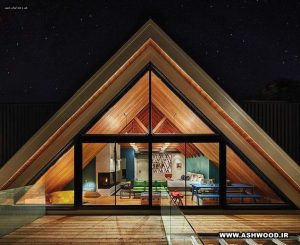 قیمت کلبه چوبی
قیمت کلبه چوبی - تزئین دکوراسیون خارجی با تنه درخت ، پوست درخت و شاخه
 تزئین با تنه درخت ،چوب در دکوراسیون
تزئین با تنه درخت ،چوب در دکوراسیون - طبقه بندی سبک های معماری معاصر
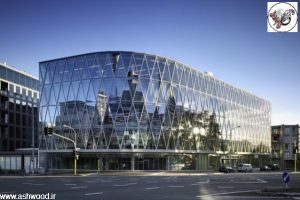 ساختمان و معماری ، سازه های چوبی
ساختمان و معماری ، سازه های چوبی - کلبه چوبی ، سازه های چوبی لوکس و سبک چوب
 سازه های مدولار چوبی
سازه های مدولار چوبی







